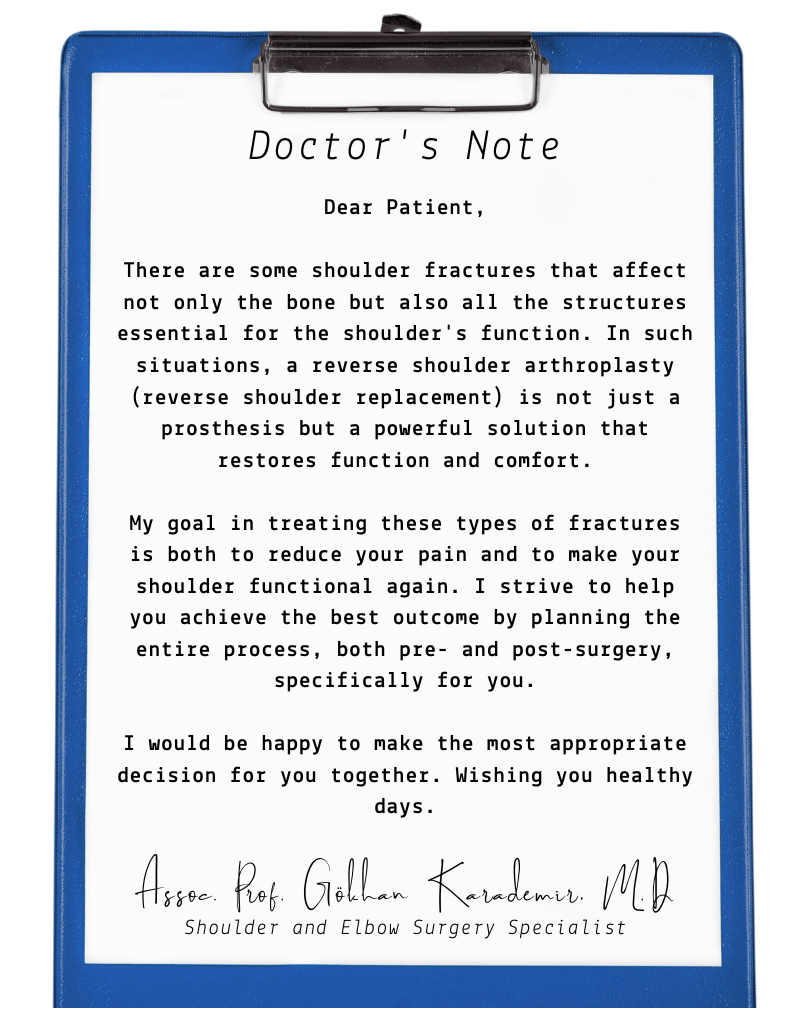Shoulder fractures are common, especially in elderly individuals and patients with osteoporosis (a condition causing weak and brittle bones), often resulting from falls. These fractures occur in the head of the upper arm bone (humerus) and can sometimes be severely fragmented (broken into multiple pieces), seriously compromising the joint’s integrity. The treatment plan is determined based on the type of fracture, the degree of fragmentation, the patient’s age, and the condition of the shoulder’s soft tissues.
Traditionally, such fractures were treated with plate-and-screw fixation or a partial shoulder replacement (hemiarthroplasty). However, in recent years, reverse shoulder arthroplasty has become more prominent, especially for complex fractures and cases accompanied by problems with the rotator cuff muscles (the group of muscles and tendons stabilizing the shoulder).
A reverse shoulder prosthesis is a special joint implant designed by reversing the shoulder’s natural anatomy. This design allows the deltoid muscle (the large muscle on the side of the shoulder) to power shoulder movements, even if the rotator cuff muscles are non-functional.

When Is Reverse Shoulder Arthroplasty Preferred?
Reverse shoulder arthroplasty is generally preferred in the following situations:
In these situations, a reverse prosthesis may be superior to hemiarthroplasty (partial replacement) in terms of both functional outcomes and pain reduction.

Surgery Duration: Approximately 90–120 minutes
Anesthesia Type: General anesthesia + nerve block (regional anesthesia to numb the arm)
Surgical Method: Open surgery (via the deltopectoral approach, an incision at the front of the shoulder)
First day: 4–6 (2–3 if a nerve block is administered)
First week: 3–4
After 2 weeks: 1–2
A hospital stay of 2–3 days is generally recommended.
First 4–6 weeks: A sling is used
Starting from the 2nd week: Passive movements begin (movements guided by a therapist or the other arm)
5th–6th week: Active movements (moving the arm on your own) and strengthening
3rd month: Return to daily life activities 6th month: Full return to functional activities
Because the reverse prosthesis provides better results in cases of rotator cuff insufficiency. Additionally, the implant integration is higher in elderly patients with low bone quality.
Yes. It is possible to perform many movements, including overhead activities, without pain.
Absolutely, yes. Controlled physical therapy in the early stages is the most important factor determining the long-term success of the prosthesis.
With the appropriate patient and surgical technique, it can last 15–20 years or longer.
Like any surgery, there are risks, but with an experienced surgeon and careful follow-up, the risk of complications is quite low.